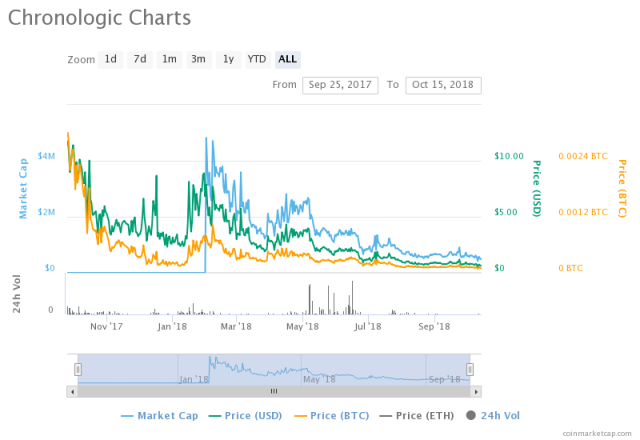Every blockchain, every #cryptocurrency project is based on a consensus protocol. These protocols are designed to facilitate group decision making on blockchains where the parties don't know each other yet the best decisions that benefit the entire population of the blockchain can be arrived at efficiently, minimizing trust as a factor. #Bitcoin has proof of work. Other blockchains, like #Nxt and #Peercoin, use proof of stake. #Lisk, #EOS, and #Steem are a few that use delegated proof of stake. Other consensus mechanisms include leased proof of stake, Hyperledger Sawtooth's proof of elapsed time, and practical byzantine fault tolerance, made popular by Hyperledger Fabric. #Steemit, a social media Dapp that sits on top of the Steem blockchain, uses what they call a “proof of brain” protocol that tokenizes content creation. ChronoLogic is the first blockchain to use a proof-of-time consensus algorithm.
I can't believe no one thought of proof-of-time before ChronoLogic. On the surface, it's a brilliant idea, but how ChronoLogic has approached it leaves much to be desired.

Source: Screenshot from the ChronoLogic Network website.
Taking the time-honored principle of the time value of money and tokenizing it, ChronoLogic is tackling very specific use cases for the financial world. Their aim is to build a blockchain where ERC-20 tokens can be created based on real-world finance principles.
The Value of Time
Time is valuable, but what gives time its value? First, it is a natural resource. Unlike other natural resources—such as oil, gold, and water—it has no physical qualities. Yet, it is the most valuable natural resource in existence.
One reason time is valuable is because it is immutable and irreversible. You can't delete time, erase its derivatives, or undo its consequences. It always moves forward and never goes backwards. For these reasons, it is predictable.
Another reason time is valuable is because it is scarce. No one can create more of it, but no one knows how much there is exactly. It could potentially come to an end at any moment.
ChronoLogic's first token experiment is its own DAY token, which is pegged to time so that the only way to create more of it is through the passage of time.
ChronoLogic ICO: DAY Token and TimeMints
Currency has to be minted. Real world fiat money is minted by governments. Bitcoin is minted through mining. The currency of Steem is minted with content creation. Other blockchains use other methods for minting coins or tokens. ChronoLogic uses what they call TimeMints.
The ChronoLogic ICO took place in September 2017. ICO Bench gave it a 2.8 rating out of 5. The ICO focused on an initial run of TimeMint addresses where contributors purchased DAY tokens with ETH. Each contributor purchased from 1 to 333 ETH where each ETH was worth 24 DAY tokens. During its ICO, ChronoLogic sold $7.4 million worth of DAY tokens. That's not very good considering their goal was $13 million.
There are 3,333 TimeMints, minting addresses that create new currency daily. The new currency creation was performed and executed through a smart contract and a MintingAlgorithm. Each 88 day period is called a ChronoEra. That all seems simple enough, but it gets more complicated when you calculate the number of tokens each TimeMint creates. They're not all the same. In fact, each TimeMint has a range from 0.5% to 1% (called ChronoPower). At the end of each ChronoEra, 88 days, each TimeMint experiences a “halving” where the number of DAY tokens on that day are halved. Presumably, this is to combat inflation.
Let's add one more complexity. ChronoPower is determined by where contributors fall in the line up. For example, the first contributor, or purchaser of DAY tokens, starts with a ChronoPower of 1% using the first minting address. The second contributor uses the second minting address and the ChronoPower is reduced by 1/88 of the max. This succession continues until .05% ChronoPower is reached.
Strength and Weaknesses
ChronoLogic's timeline calls for the rollout of the Chronos platform this year, which can be used by financial institutions to implement their own time-based ERC-20 tokens.
According to ChronoLogic's marketing collateral, practical and specific use cases ChronoLogic was designed for include debt management, fixed-income investments where returns are pegged to time, automated payments, airline refunds for passengers based on the number of minutes they were delayed, software packages based on time usage, and freelancers who want to be paid based on the amount of time they've worked. One of the key components to these time-based smart contracts is Ethereum Alarm Clock.
Some of these use cases make perfect sense. I can see debt-based instruments for ERC-20 tokens based on the Chronos platform. What makes less sense is freelance payment based on time worked. The freelancers I know don't punch a time clock. Rather, any freelancer worth his wait in DAY tokens will compete on quality, and that's not a value measured by time.
ChronoLogic has provided for the sale of its TimeMints to other parties. That's a plus as it allows investors an easy exit strategy. But I wonder how valuable TimeMints are going to be on the open market. They probably won't hold much value at all unless ChronoLogic takes off, which is a huge “if” because there are so many competing cryptocurrencies right now that what ChronoLogic is trying to do—provide an easy way for time-based real-world transactions to take place on a blockchain—can easily be implemented by any of the major competitors. The only competitive advantage ChronoLogic brings to the table is being based on Ethereum.
Another issue regarding the sale of TimeMints is a requirement for sellers to hold 8,888 DAY tokens in their TimeMint. Why? Their white paper doesn't say, and I can't think of a solid reason why the seller would need to hold any DAY tokens at all in order to sell their TimeMint, especially since they receive those tokens along with the buyer's bid after the close of the sale.
The built-in mathematical complexity of the DAY token itself is another drawback. Unless a user has studied advanced mathematics, understanding how ChronoPower and TimeMint values are arrived at is an exercise in mental gymnastics. Considering that the intended audience for the platform consists mostly of financial and logistics experts, that's not a huge problem. But if ChronoLogic wants the average freelancer to use its platform, that will be a bigger hurdle.
More of an issue is why there needs to be a DAY token at all. The ChronoLogic premise is that time-based transactions can take place on the blockchain if there is a token pegged to time. Since their intent is to create a platform where users can create their own time-pegged tokens, it seems that the DAY token is unnecessary—unless, of course, they simply created the token to show a practical use case and to use it as proof of concept. But once the proof of concept has been accepted, the DAY token's usefulness is gone.
This could be why the DAY token's value has plummeted to .702835 at the close of the day on September 30, 2018, down from its opening price of $11.76 at issuance on September 25, 2017. One could argue that DAY is just following the same trajectory as the rest of the market, but its high of $27.31 was reach on October 10, 2017, just after the close of its ICO. When the crypto market peaked in December last year, DAY hit a one-month high $8.86. With the exception of a few small spikes, the token has been on a steady decline since then. I don't see its value rising. DAY's market cap peaked at $5.2 million in early February this year. It now sits at just under half a million. Its rank on CoinMarketCap, as of today, is 1,299.

Source: CoinMarketCap
Conclusion
ChronoLogic was founded by a former Goldman Sachs investment banker and a Forbes 30 under 30 entrepreneur. While that experience is valuable for the type of project it seeks to be, it's not enough to propel ChronoLogic to blockchain stardom. Unfortunately, the white paper hasn't been updated since August 2017. With key developments in its timeline that appear after this date, there should be some additional communication about where ChronoLogic is in its development. For instance, there was supposed to be six proof cases completed by the end of last year, but I can't find any mention of them on the company blog other than a partnership with Ethereum Alarm Clock and another one with OneLedger.
ChronoLogic seems to be focused on small improvements to its Chronos platform and minor achievements. Other than that, I can't see any major moves lately. What seemed to be a good idea is leaving me underwhelmed.
This article was written for trivial.co, an analytics platform for tokens on the Ethereum network. If you have good knowledge about a token, don't keep it to yourself. Write for Trivial!
Looking for content for your cryptocurrency or blockchain blog? Get in touch with Cryptobloggers today.


Feel free to browse some of my latest Steemit posts.
The backside 5:
- Poetry Sunday: Carcass
- Why Cryptocurrency is Important to Me
- Hire a Blogger for Your Crypto/Blockchain Blog
- Steemit Incubator Ideas Contest Entry
- Let's Have a Minnow Celebration Party


Top-notch crypto content for your crypto/blockchain blog.

Animation By @zord189


Posted from my blog with SteemPress : http://tayloredcontent.com/does-chronologic-store-value-with-proof-of-time/
I’m always interested to see how the up and coming alts are getting on . I heard of this one and I was interested but went with polymath instead. Wouldn’t mind getting in at 70 cent though . Thanks for the post. You should do more of these. Very interesting .
Downvoting a post can decrease pending rewards and make it less visible. Common reasons:
Submit
Thanks.
Downvoting a post can decrease pending rewards and make it less visible. Common reasons:
Submit
It's interesting to imagine what other ways crypto could be valued and used.. I'm sure in just a little while, we'll be seeing some truly whacky things! Fascinating stuff.
Downvoting a post can decrease pending rewards and make it less visible. Common reasons:
Submit
That is a cool new way of having a blockchain/crypto, we will have to see how it pans out though and whether they can succeed in making it very valuable, in time.
Downvoting a post can decrease pending rewards and make it less visible. Common reasons:
Submit
@blockurator upvoted this post via @poetsunit

Poetsunited - DISCORD - @poetsunited - witness upvote
Downvoting a post can decrease pending rewards and make it less visible. Common reasons:
Submit
I not sure this idea will work. It is so close to what POW ends up being as you can time when they reach the next reward drop. Also that asking you hold coins seems like a masternode thing but without daily income that isn't great.
Downvoting a post can decrease pending rewards and make it less visible. Common reasons:
Submit
Yeah, their white paper isn't clear on a lot of the details. It just seems like a circus the way they describe it. The idea of a crypto being pegged to time is a cool idea, but this implementation just isn't it. IMHO
Downvoting a post can decrease pending rewards and make it less visible. Common reasons:
Submit
I'd love to trade photons on the Chronos platform.
(Scientists have already traveled back in time in the lab.)
See:
URL: https://www.collective-evolution.com/2015/12/07/physicists-send-particles-of-light-into-the-past-proving-time-travel-is-possible/
And let's not forget this Dystopian interpretation:
But seriously, too many unknowns and the overestimation of legacy financial experience value in regards to blockchain technology will keep me away...for now.
Namaste, Jaichai
Downvoting a post can decrease pending rewards and make it less visible. Common reasons:
Submit
Good choice.
If I could travel back in time and buy low then travel forward and sell high and make it back home in time for dinner, I'd be all in. Beam me up, Scotty!
Downvoting a post can decrease pending rewards and make it less visible. Common reasons:
Submit
Human factors 101: make simple things simple and complex things possible. After reading the above, about all I can say is "huh?" I think they flunked Human factors 101.
Proud member of #steemitbloggers @steemitbloggers
Downvoting a post can decrease pending rewards and make it less visible. Common reasons:
Submit
Yeah, for sure a good idea poorly executed.
Downvoting a post can decrease pending rewards and make it less visible. Common reasons:
Submit
The ideas with crypto are absolutely ENDLESS at this stage of the ballgame
Downvoting a post can decrease pending rewards and make it less visible. Common reasons:
Submit
Ideas, yes. But execution is everything.
Downvoting a post can decrease pending rewards and make it less visible. Common reasons:
Submit